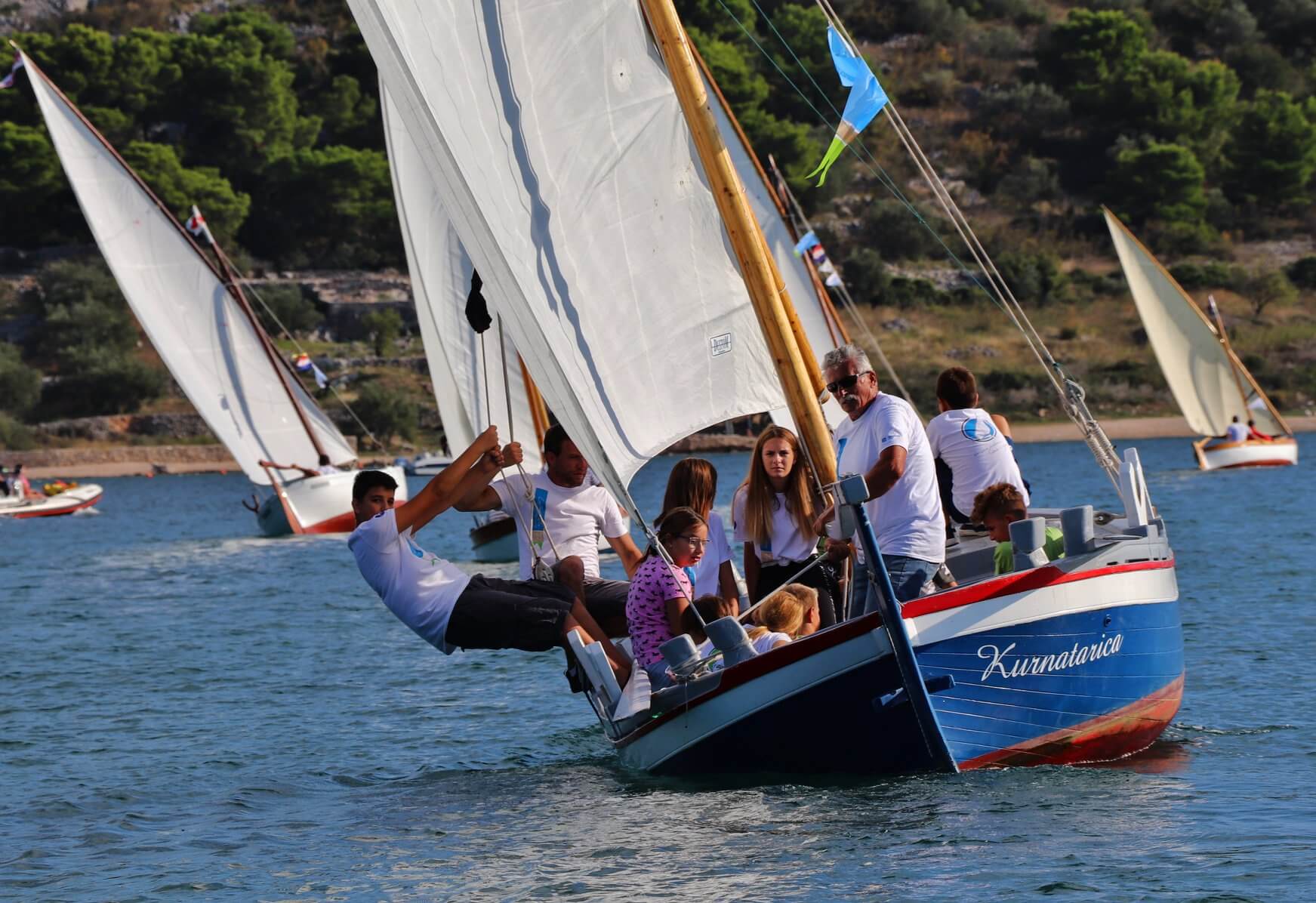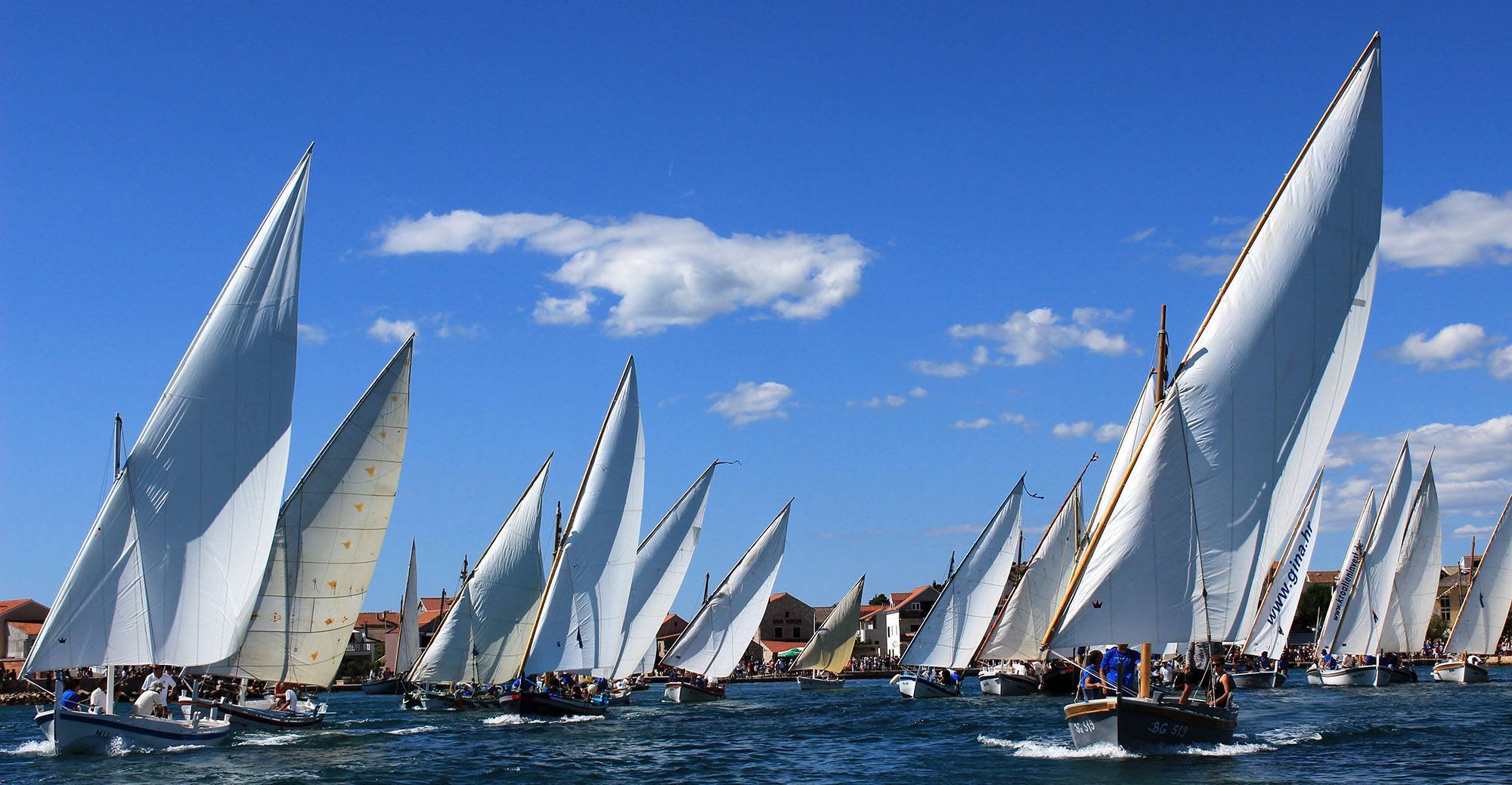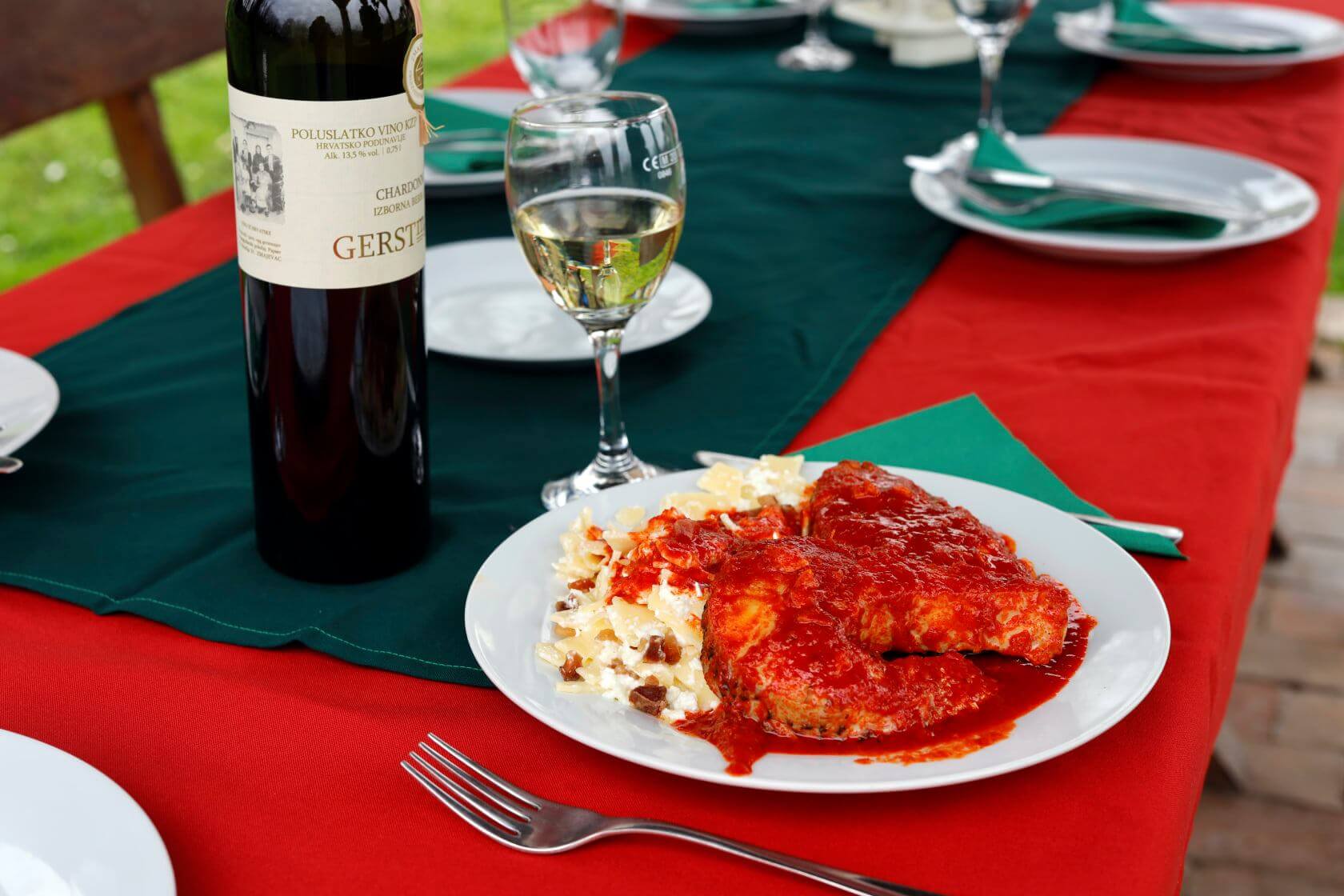Croatian Gajeta Photo Becomes Official European Union Postcard
October 28, 2021 – A Falkuša gajeta from Komiža on Vis island and a Betina gajeta from Murter are shown in a competition-winning Croatian photograph which will now become an official European Union postcard
If you're reading this, chances are you already know Croatia is very often 'postcard-pretty.' Well, it seems you're not the only one to think so.
One Croatian photographer's work has won over judges in a competition to find an official European Union postcard. The photograph (main picture), taken by Hina journalist Andrina Luić shows two sailing boats – a Falkuša gajeta and a Betina gajeta. Both are traditional wooden ships commonly seen in Croatian waters. In the background, the Betina gajeta is instantly recognizable as Croatian because its sail carries a red and white checkerboard pattern.
European Union postcard competition
 © Dani u Vali
© Dani u Vali
The 'Greetings from the Islands' photo competition was published in September by the European Commission's Clean Energy for EU Islands Secretariat (here). Andrina, who is from Lukoran on Ugljan island, took her winning photo two years ago in Stari Grad on the island of Hvar. The sailboats were snapped during the festival of ships, sea and sailors 'Days in Vala' (here). The event is organized by Cronaves of Split, of which Andrina is a member. They are a society with an aim to promote Croatian maritime heritage.
Andrina's photograph will now help promote Croatian maritime heritage all across the continent. Thousands will see the traditional wooden ships and their sails when the image is made into an official European Union postcard. The picture triumphed above other island photo entries from Italy, Spain, Germany, Portugal and elsewhere in Croatia. The evaluation criteria were originality, creativity, overall artistic impression and composition, and visual appeal. Each competitor was only allowed to enter one photo into the competition. It would seem that Andrina - who has been taking photographs for many years - made exactly the right choice.
Falkuša gajeta from Komiža on Vis island and Betina gajeta from island Murter
 Traditional gajeta ships from Betina in a regatta around island Murter © Neven Jović
Traditional gajeta ships from Betina in a regatta around island Murter © Neven Jović
A Falkuša gajeta is a thinner and faster version of the Murter-style gajeta. Falkuša boats have been used for fishing in the area of islands Vis and Korčula since at least the 16th century. They were adapted to the needs of fishermen from Komiža on Vis island, who would regularly travel far out into the open sea - as far west as the Palagruža archipelago - to chase their catch.
The template of these boat designs was taken to Betina on Murter island by Korčula shipbuilder Paško Filippi in the first half of the 18th century. There he founded a shipyard and began building his boats, adapting them to the slightly different climate and the very different needs of the locals.
The people of Murter and its surroundings needed a boat as much for transportation of goods as they did for fishing. Therefore, the Betina gajeta was made stronger, wider, bigger and more load-bearing, with a deck at the bow and stern. They were commonly used to transport goods between Murter and estates on the Kornati islands.
You can today visit an award-winning museum (here) dedicated to the history of this wooden boat building in Betina, island Murter. Or, if you can't make it there any time soon, you can now make do with one of Andrina's postcards until you can.
Touch of Baranja Photo Exhibition in Zagreb Until End of April
April 21, 2021 - A Touch of Baranja showcases 20 photos of the Baranja region to promote this rich natural and cultural site to both domestic and foreign visitors.
If you want to experience a touch of Baranja, but you're stuck in Zagreb, the city's Flower square (Cvjetni trg) offers you a compromise.
Dodir baRAnJe (A Touch of Baranja), an outdoor photo exhibition that will remain open until the end of April, highlights 20 photos of beautiful Baranja.
''A picture says a thousand words, so this is how we decided to present the beauty of Baranja and motivate Zagreb's citizens and their guests to visit the region located between the Danube and Drava rivers next to the border with Hungary to have a proper break,'' says the website of the Baranja Tourist Board.
The Tourist Board, along with Tourist Boards of Draž and Bilje-Kopački Rit hosted the event.
Nenad Milić, Dubravko Franjin, Romulić&Stojčić Studio, Mario Đurkić, and Zvonimir Janković are the photographers whose work is being featured in the exhibition. Below every photo, there is a QR code that offers an explanation of the photo both in English and Croatian, and in the evening, the photos are illuminated by solar power collected during the day.
As written by the Explore Croatia site, Baranja is special for its display of multiculturalism of the people who live there and who have previously passed through the territory. Tradition and cultural heritage in the area have survived the challenges of time, and nowhere is that more visible than in Baranja's cuisine.

© Visit Baranja
''Baranja continues to remain a special destination which will tell the traveller various stories about tradition, family, life secrets, love, death, wines, hot peppers, specific fishing, weddings…“, explains the Explore Croatia site.
Baranja also offers the richness of nature as it is surrounded by rivers and the Kopački Rit swamp and bird reserve that is home to a wide and impressive variety of animals and plants, representing a real treat for the dedicated traveller.
When in Baranja, make sure to try the delicious Fiš Paprikaš, Baranja's own local Kulen recipe, and carp prepared in a delicious way only Baranja knows how to do.
Learn more about Croatia's food on our TC page.
For more about travel in Croatia, follow TCN's dedicated page.


